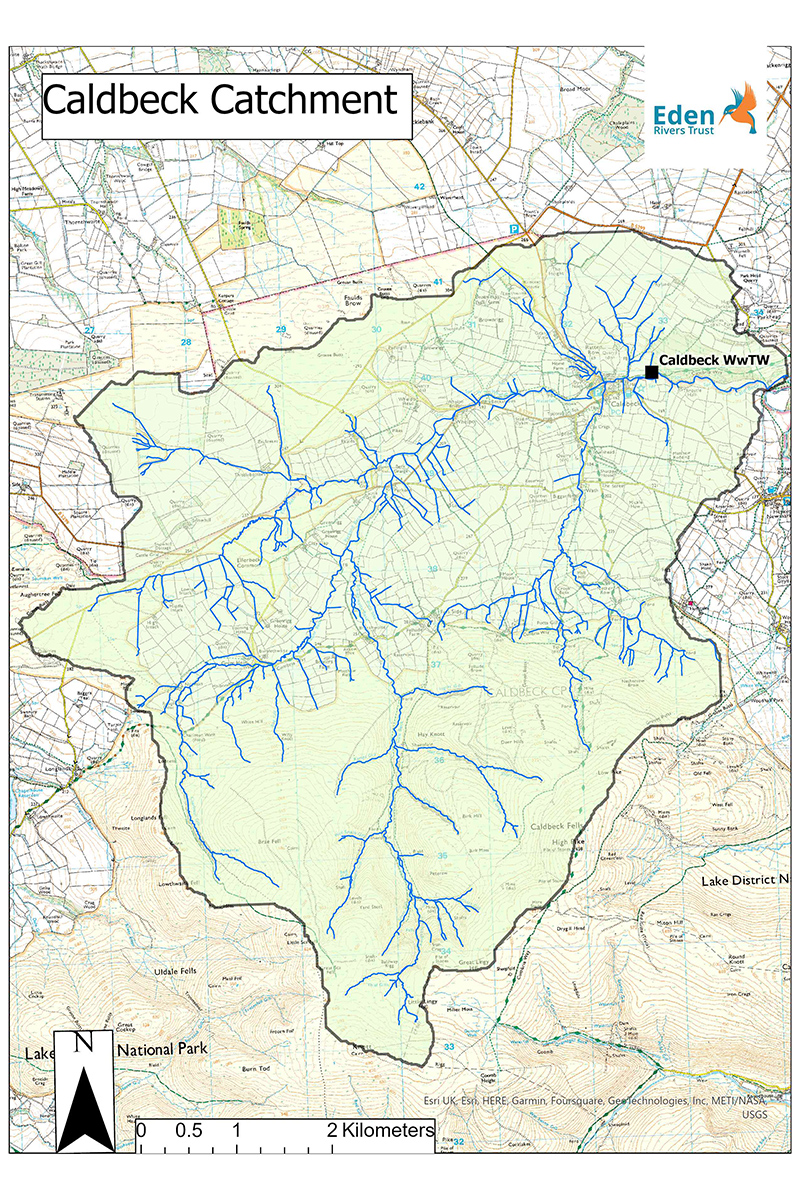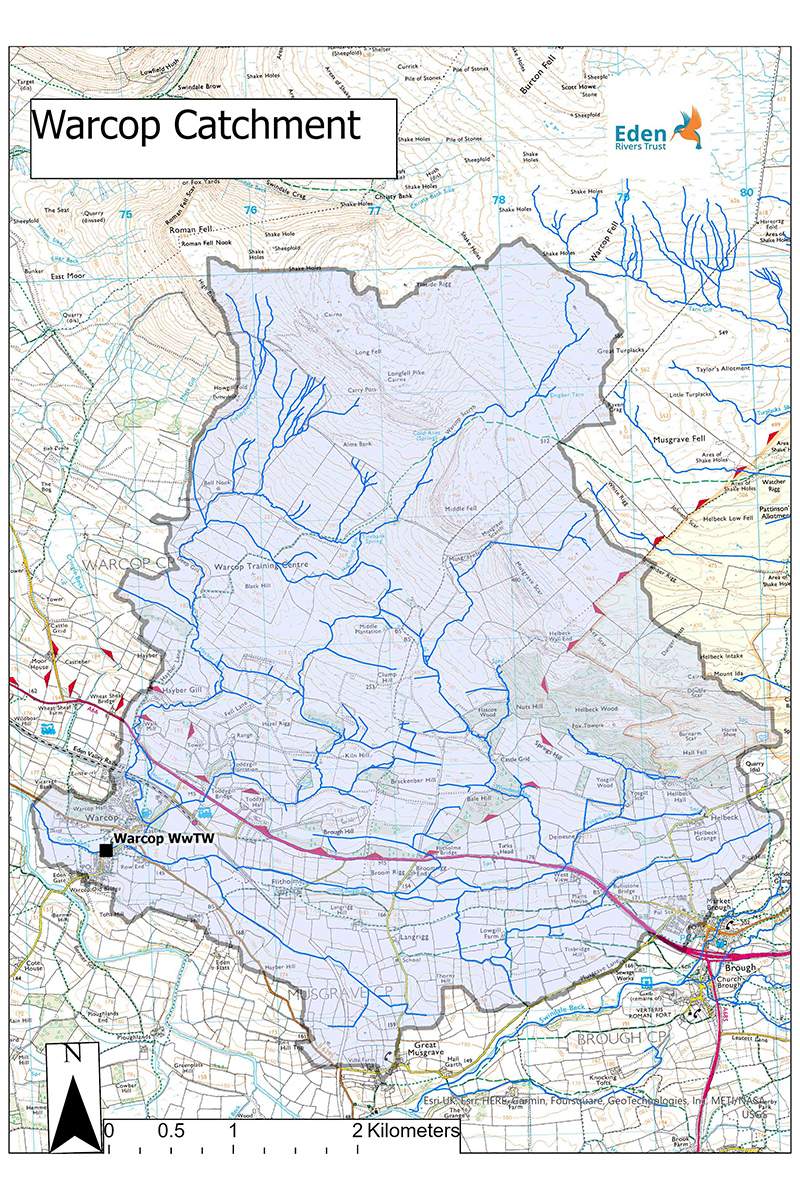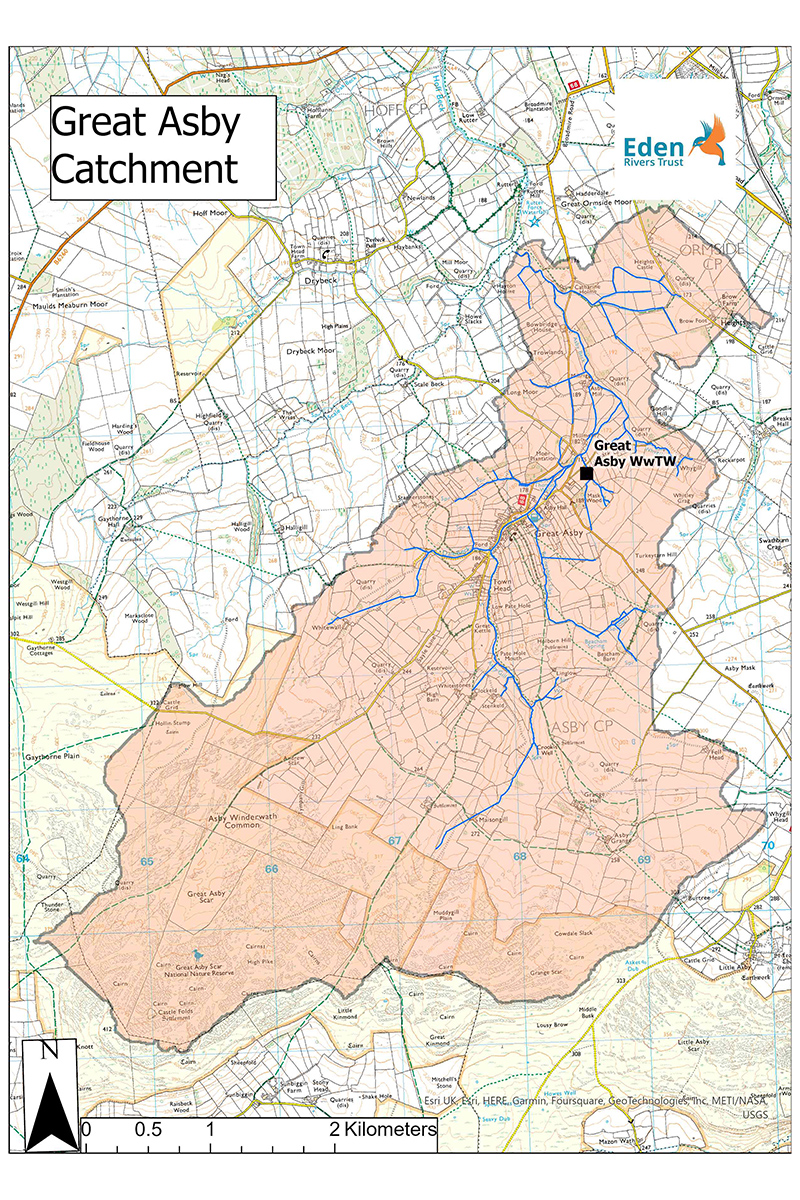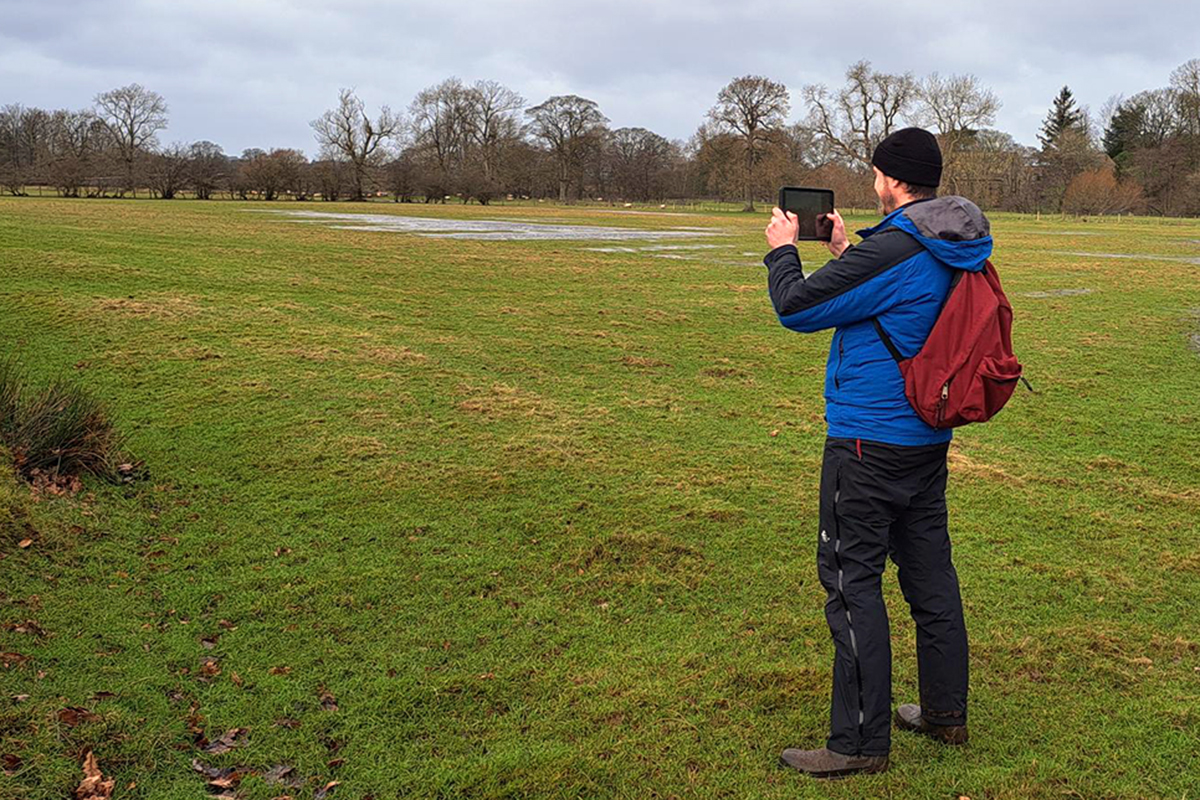
Working towards a green recovery
By Alex Green, Farming and Conservation Officer, pictured whilst conducting a farm walkover
What is Green Recovery?
As the nation emerged from the Covid-19 pandemic, water company, United Utilities (UU) responded to calls from the government and regulators asking for new investment to support greener, sustainable economic recovery in the North West. Under the banner of Green Recovery, suitable projects were drawn up with a wide range of partners (such as ERT) to be delivered using nature-based solutions to improve rivers, protect habitats, combat invasive species, enhance water quality, drainage and reduce pollution.
Having worked with ERT for several years on successful projects in the Petteril, UU could see the potential within the Eden catchment for more opportunities to improve water quality while providing wider benefits to people and the environment.
Our Green Recovery project
We are focusing on reducing phosphorous levels in our rivers in five priority Water Framework Directive (WFD) catchments across the Eden. These catchments were identified by UU as they were failing Habitat Regulations and had excess phosphorus levels in the river, so would represent the biggest opportunity to make a positive difference to river health.
Since June 2023, we have been visiting farms in Warcop, Great Asby, Long Marton, Temple Sowerby, and Caldbeck; developing relationships with farmers to identify opportunities and build on previous work we have done throughout the Eden catchment.
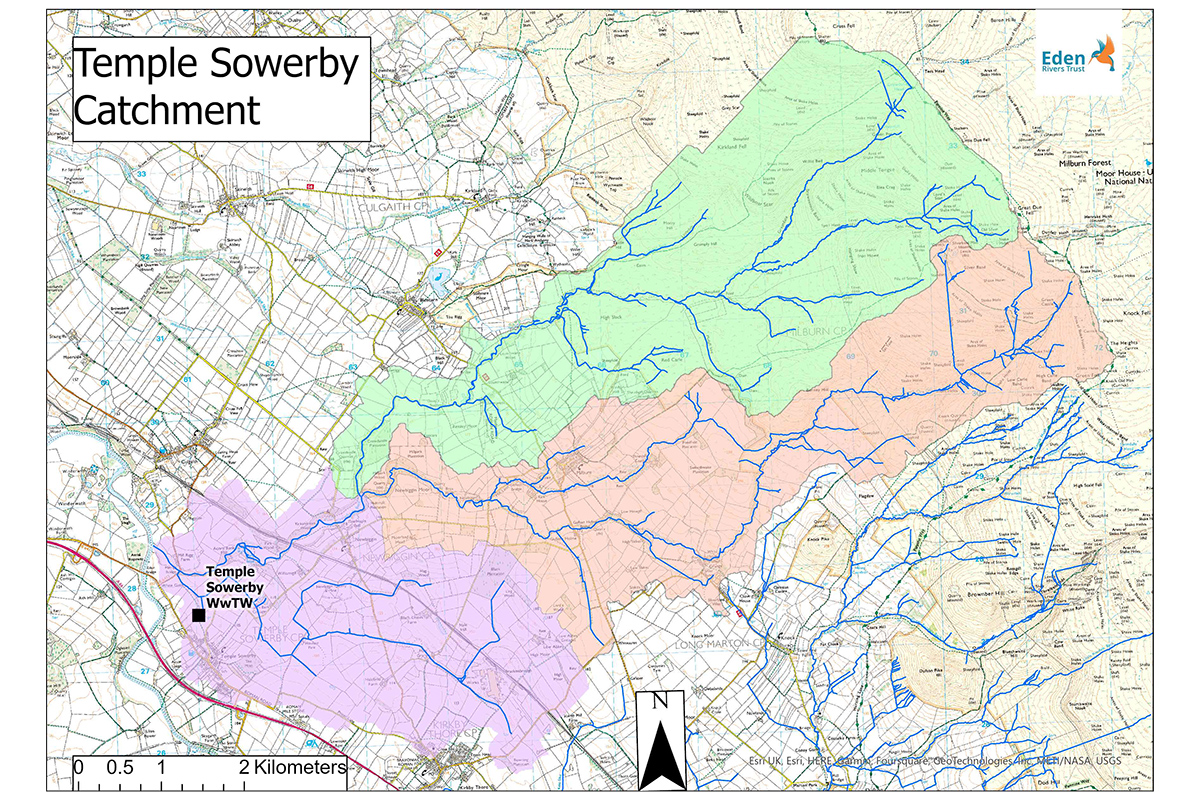
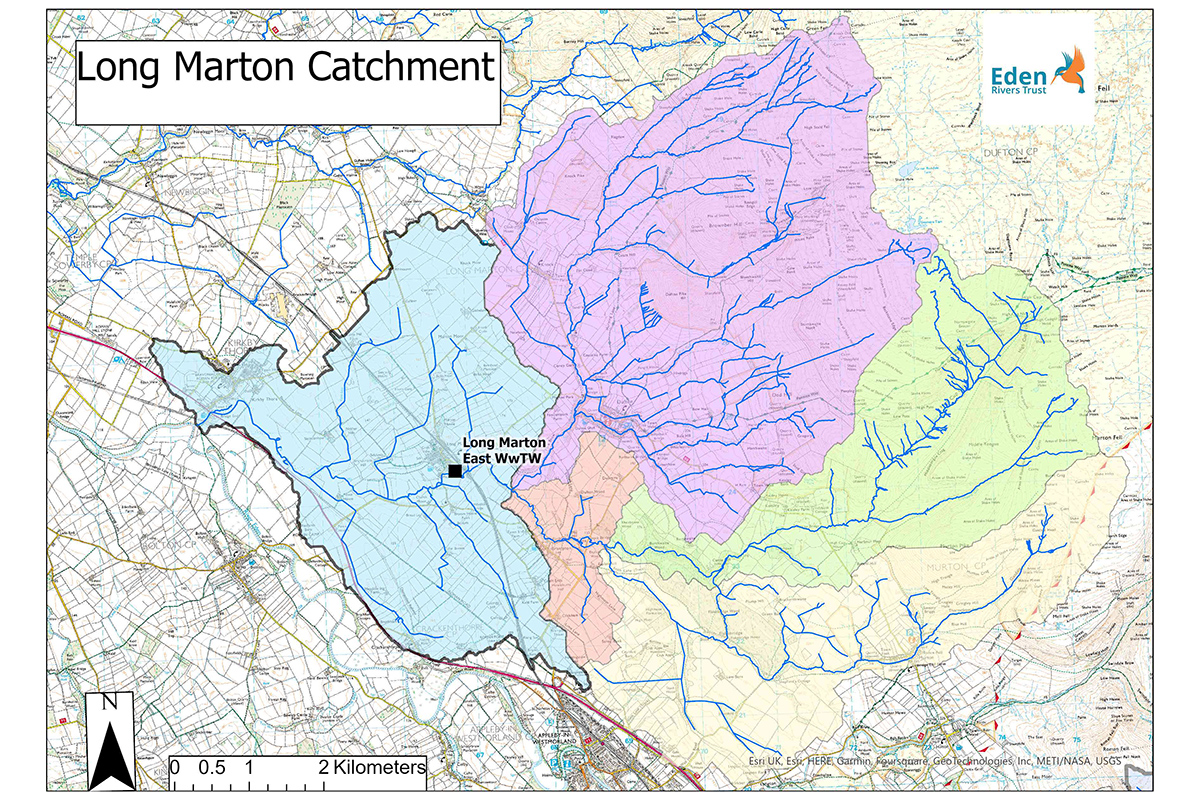
So far, we’ve undertaken and reported on 10 walkovers, with another 20 planned in 2024. These walkovers aim to identify opportunities that will deliver benefits to both water quality/ the environment and farmers. This has involved significant research to develop methods to quantify the potential of our work – often involving adaptation of available tools and looking at novel solutions where none currently exist.
We are currently in our second phase of scoping; continuing to look for opportunities that we can progress to delivery on farm, utilising funding that is now/soon be available. If you farm in any of the areas above, there is still time to get involved – please get in touch with us for an informal chat.

Whilst the focus of this project is to reduce phosphorus levels in our rivers, we aim to create projects that provide the widest range of benefits possible; keeping nutrients and soils on land where they’re needed, improving habitats and biodiversity, and supporting farmers as they adopt more environmentally friendly practices.
Why focus on phosphorus?
Phosphorus is an essential nutrient for development in plants and animals, making it very valuable (as farmers will know). Watercourses are especially sensitive to changes in phosphorus, so maintaining the natural balance of nutrients is vital.
When the levels of phosphorus increase, the balance is disturbed, often leading to excess algae growth (eutrophication) and deoxygenation of the water. Under these conditions, nothing can grow or survive; significantly reducing or eliminating biodiversity in the area.
As an essential nutrient, phosphorus is a necessary part of agriculture, without it the grass and crops wouldn’t grow.
This is why we’re working with farmers to keep nutrients in fields – where they’re needed for food production, and out of the watercourses where they affect the natural balance needed for healthy rivers.
Practical solutions that keep nutrients in the fields and out of the rivers include:
Careful soil and nutrient management: The aim is to ensure that soils are healthy and that the right amounts of nutrients are present to meet the crop’s needs.
Healthy soils can hold water and nutrients better while making them available for plants to use as required.
Knowing the condition of the soil and the crop’s requirement means that nutrient applications can be planned. This is more efficient and makes sense financially, as only the amounts needed are used, ensuring that no excess would end up in watercourses.
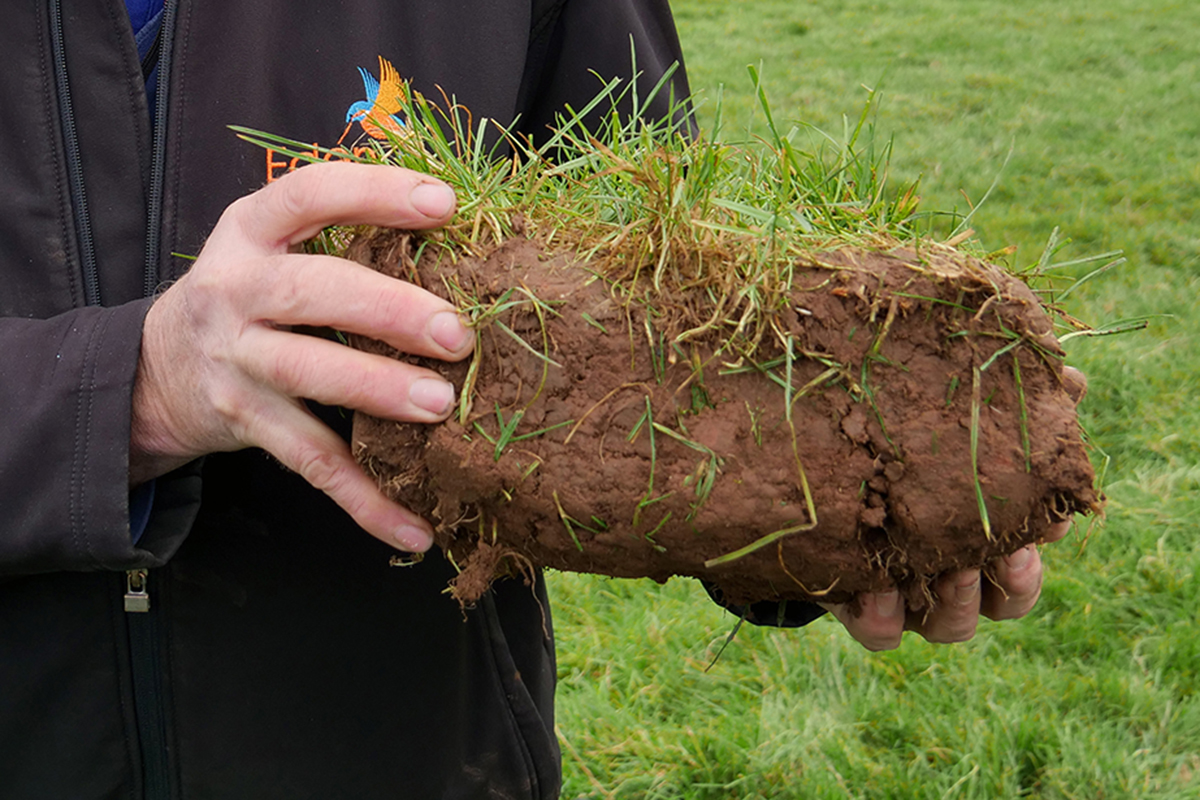
Looking at the condition of soil.
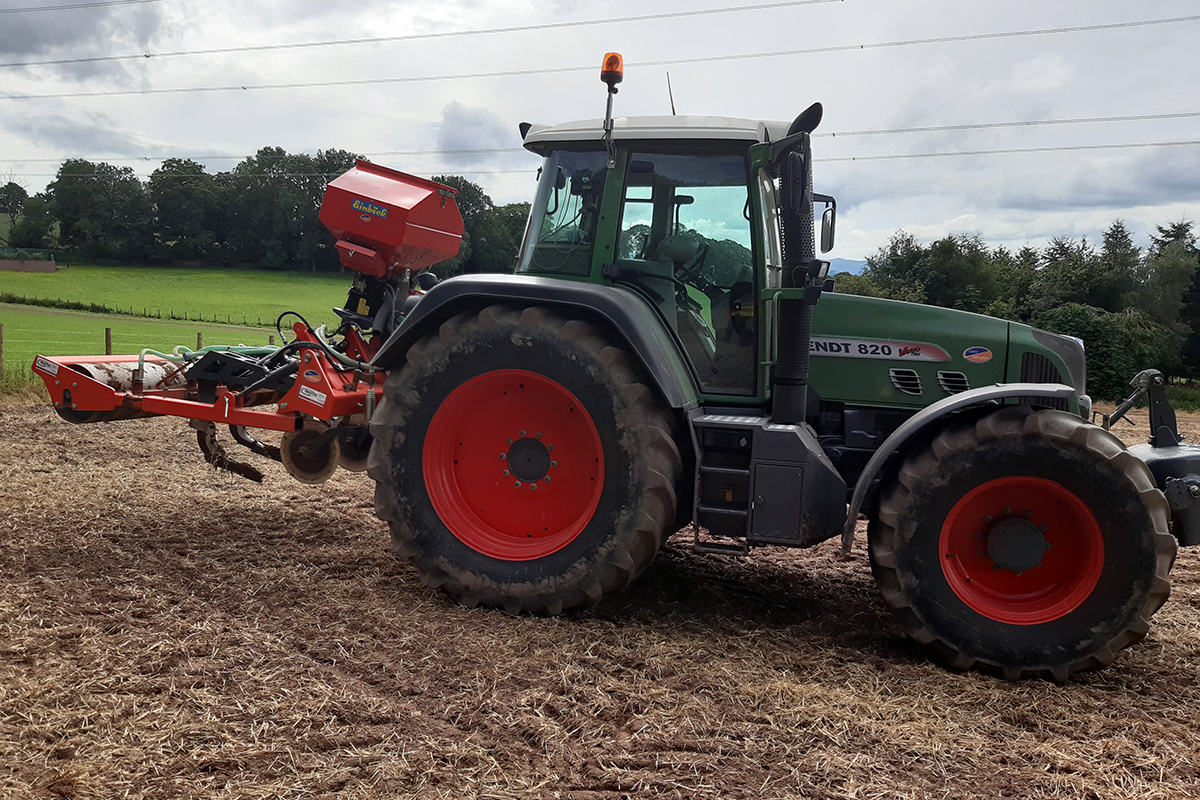
Tractor with ERT's pan buster attached.
Soil aeration and compaction removal: improving soil structure by removing compaction allows roots to develop fully and improves gas exchange, infiltration, nutrients, and soil retention. This reduces surface run-off and allows nutrients to enter the soil and be used by plants. This means lower nutrient applications with the same yields and less soil and nutrients lost from fields and entering watercourses. Eden Rivers Trust has an aerator and sward lifter which farmers can use, free of charge.
Managing clean and dirty water: Roofing over stores and yards and draining clean water directly to watercourses makes managing rainwater much easier.
Keeping clean water off nutrient stores and yards means that the nutrients aren’t diluted – improving storage capacity and reducing the volume of effluents that need to be captured and stored. In turn, this reduces storage costs, improves the efficiency of transport and application, saves money and fuels, and ensures that nutrients are applied where they’re needed … when they’re needed.
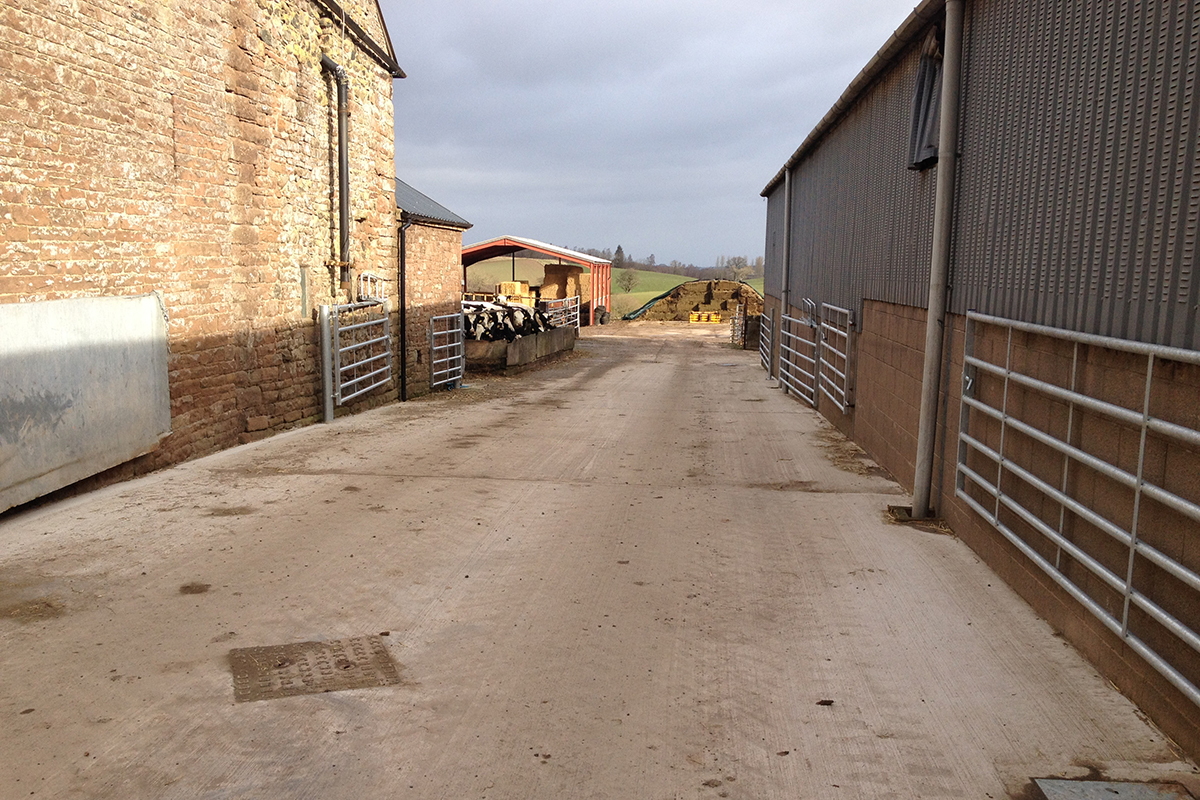
Clean yard with a good drainage system
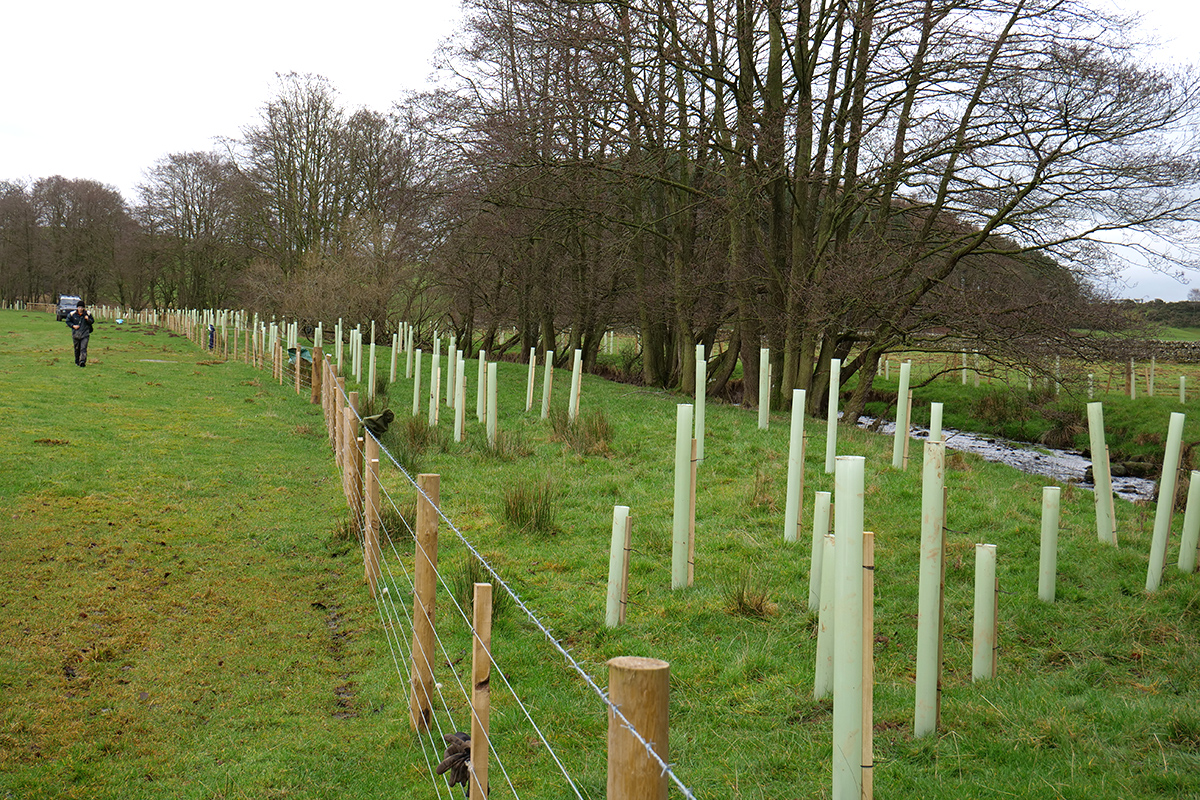
Fenced off watercourse at Flakebridge
Fencing off rivers and streams: although watercourses are a good source of drinking water for livestock, direct access can have negative consequences. Damage and compaction to the soil surface caused by livestock hooves (soil poaching) reduces plant cover on riverbanks, increasing erosion. Disturbing the riverbed can cause sedimentation, and directly depositing faecal matter into the watercourse can introduce harmful bacteria and change the nutrient levels.
To prevent this, we can fence off the watercourse to stop the livestock from accessing it and provide alternative drinking water from troughs.
This can improve the quality of the watercourse for nature but can also improve the quality of drinking water for the livestock, prevent waterborne diseases, and reduce bank erosion which retains productive land.
Encouraging diverse vegetation: having a range of vegetation types will provide a rough surface above ground which can intercept rain and slow surface run-off. There will also be a greater range of root structures and depths that will help to improve infiltration and water retention.
There are many ways to encourage diverse vegetation; creating riparian buffer strips, planting hedges and woodlands, and taking small areas out of production to name a few. They’ll provide a range of additional benefits such as a variety of wildlife habitats essential for a healthy ecosystem, and food and shelter for livestock.
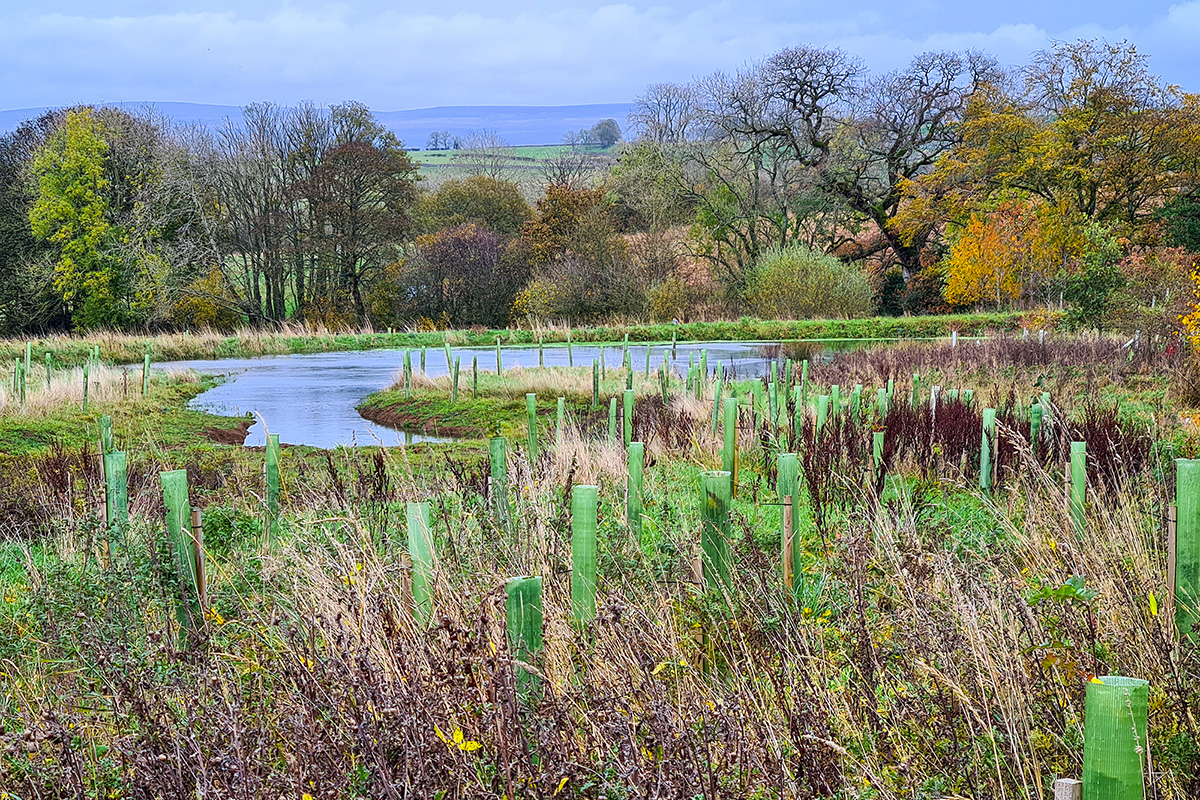
Riparian planting at Crake Trees Manor, Crosby Ravensworth
Interested in finding out about practical solutions for your farm?
If you farm in the catchment of Warcop, Great Asby, Long Marton, Temple Sowerby, or Caldbeck get in touch with us on 01768 866788 for free advice and suggestions on how you could better manage water and nutrients and to explore options for funding towards capital works and management.

